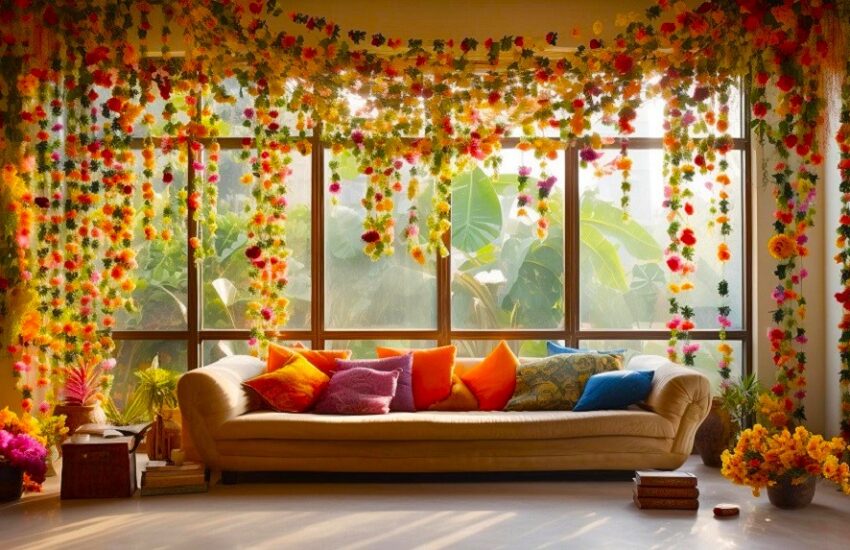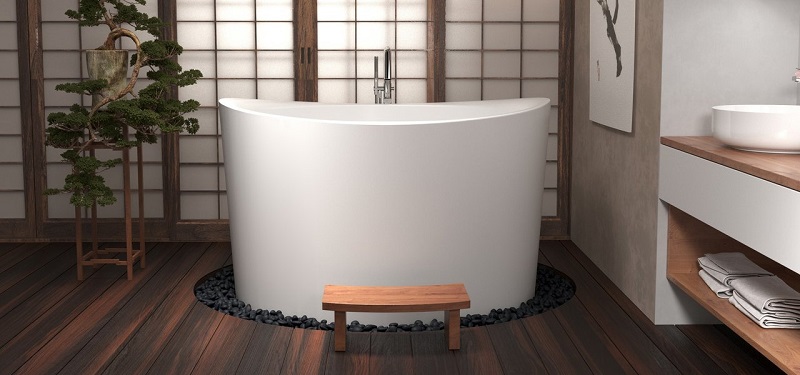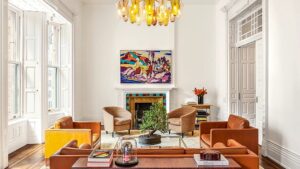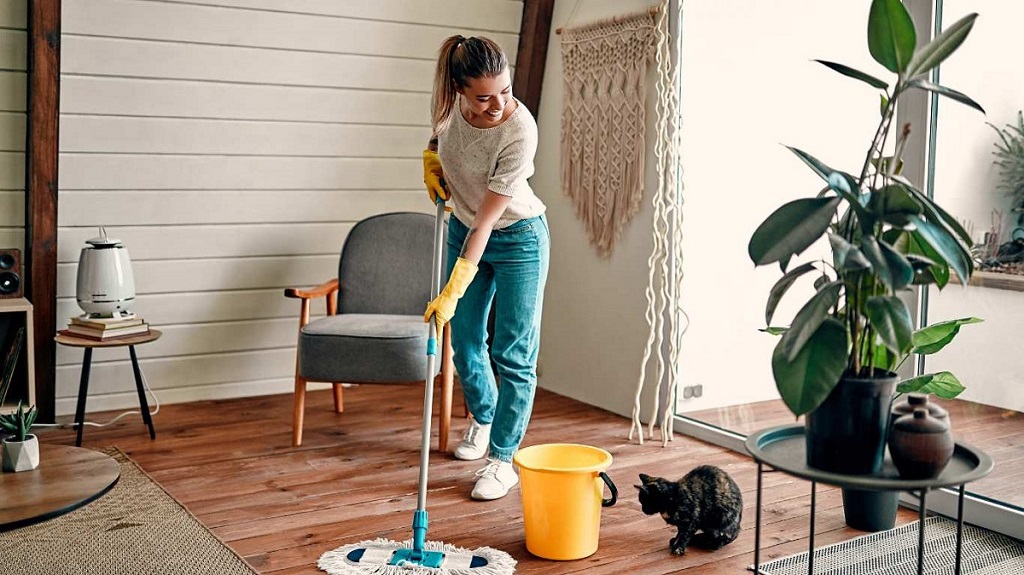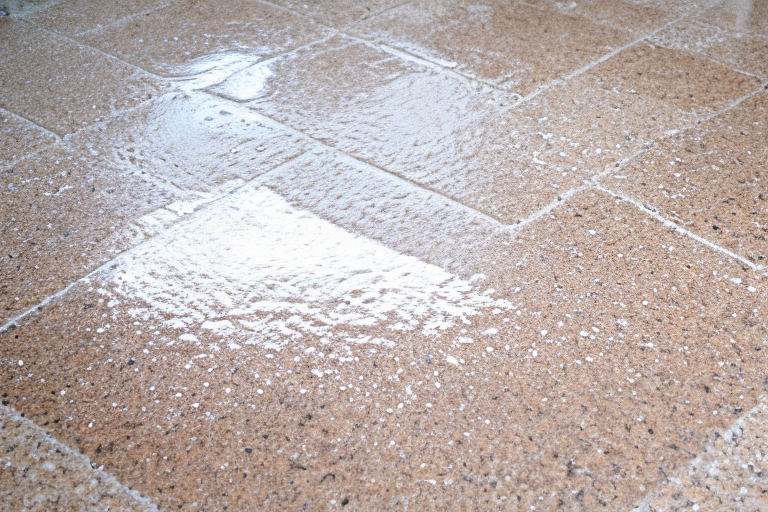In the realm of home design, the interior holds a special significance. It’s not just about creating a space; it’s about crafting an environment that reflects your personality, enhances functionality, and fosters comfort. Whether you’re starting from scratch in a new home or looking to revamp your current space, the journey of interior design is both thrilling and daunting. Fear not, for we’re here to navigate through the myriad of possibilities and help you plan your interior design like a pro.
Understanding the Basics
Before diving into the intricate details of interior design, it’s essential to grasp the fundamental principles that govern it. At its core, interior design is about harmonizing aesthetics with functionality. It involves understanding spatial dynamics, colour theory, lighting concepts, and the art of furniture arrangement. By mastering these basics, you lay a solid foundation for your design endeavours.

Crafting Your Vision
Every successful interior design project begins with a vision. Take the time to envision how you want your space to look and feel. Consider your personal style preferences, lifestyle needs, and the ambience you wish to create. Are you drawn to contemporary minimalism, cosy Scandinavian vibes, or eclectic bohemian aesthetics? Use magazines, online platforms like Pinterest, and interior design websites for inspiration. Create mood boards or digital collages to visualize your ideas and refine your vision.
Mapping Out the Space
Once you have a clear vision in mind, it’s time to assess the space you’re working with. Start by taking accurate measurements of the room, including the dimensions of walls, doors, and windows. This information will be crucial when selecting furniture and planning layouts. Consider the flow of movement within the space and aim for a balance between openness and functionality. Experiment with different furniture arrangements on paper or using online room planning tools until you find the optimal layout.
Playing with Color and Texture
The colour scheme sets the tone for your interior design and influences the overall atmosphere of the space. When choosing colours, think about the mood you want to evoke and the natural light available in the room. Neutral tones like white, beige, and grey create a sense of serenity and space, while bold hues inject energy and personality. Experiment with accent walls, wallpaper, or textured finishes to add depth and visual interest.
Textures play a crucial role in adding warmth and tactile appeal to your interiors. Mix and match different textures like wood, metal, glass, fabric, and natural fibres to create a rich sensory experience. Incorporate plush rugs, cosy throws, and tactile cushions to enhance comfort and cosiness.
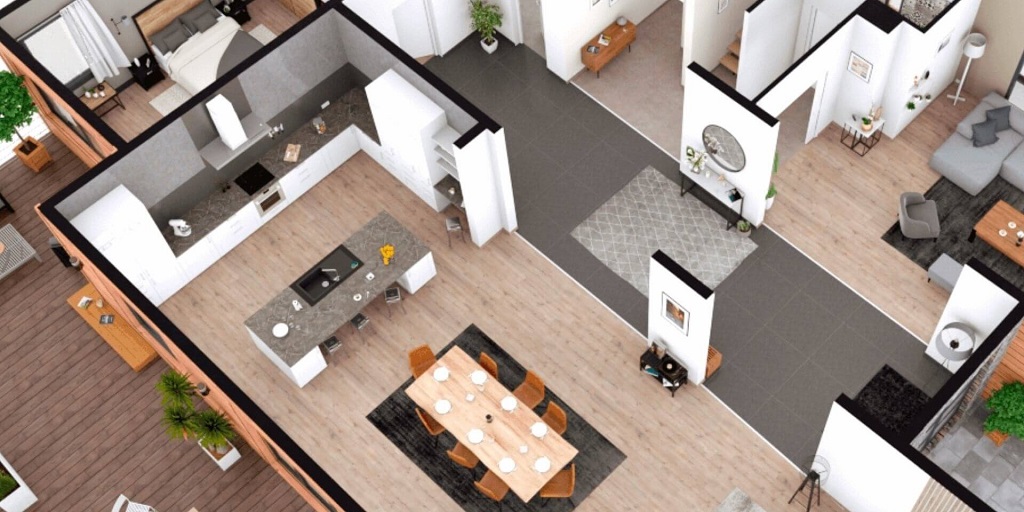
Selecting Furniture and Layout
Furniture selection is a pivotal aspect of interior design, as it not only defines the style of the space but also influences its functionality. When choosing furniture pieces, prioritize comfort, quality, and versatility. Invest in timeless pieces that can adapt to evolving tastes and trends. Pay attention to scale and proportion to ensure that furniture complements the size of the room without overpowering it.
Experiment with furniture arrangements to optimize space utilization and facilitate smooth traffic flow. Consider the focal points of the room, such as fireplace mantels, architectural features, or scenic views, and arrange furniture around them to create visual interest. Leave enough breathing room between furniture pieces to avoid a cluttered look and promote a sense of openness.
Enhancing with Décor Elements
Décor elements add the finishing touches to your interior design scheme and inject personality into the space. From wall art and mirrors to decorative objects and plants, the options are endless. Choose pieces that resonate with your style and contribute to the overall aesthetic cohesion.
Wall decor serves as a focal point and can instantly elevate the ambience of a room. Experiment with gallery walls, oversized artworks, or statement mirrors to create visual interest and reflect light. Incorporate personal touches like family photos, travel souvenirs, or handmade crafts to infuse your space with warmth and nostalgia.
Illuminating with Light
Lighting design plays a pivotal role in setting the mood and enhancing the functionality of your interiors. Aim for a layered lighting scheme that combines ambient, task, and accent lighting to create depth and dimension. Utilize natural light to its fullest potential by maximizing windows and incorporating sheer curtains or blinds for privacy control.
Complement natural light with artificial sources like chandeliers, pendant lights, sconces, and floor lamps to illuminate different areas of the room. Dimmer switches allow you to adjust the intensity of light according to the time of day and desired ambience. Don’t forget to incorporate lighting controls and smart technology for added convenience and energy efficiency.
Flooring and Window Treatments
Flooring serves as the foundation of your interior design and has a significant impact on the overall look and feel of the space. Choose flooring materials that are durable, easy to maintain, and complement your design aesthetic. Options range from hardwood and laminate to tile, vinyl, and carpet. Consider factors like comfort, acoustics, and climate suitability when making your selection.
Window treatments play a dual role in enhancing aesthetics and providing privacy and light control. Choose curtains, blinds, or shades that complement your interior style and allow flexibility in terms of natural light diffusion and privacy. Layering curtains with sheer panels or adding valances and cornices can elevate the elegance of your windows and tie the room together.
Embracing Sustainability and DIY
Incorporating sustainable practices and DIY projects into your interior design not only reduces environmental impact but also adds a personal touch to your space. Explore eco-friendly materials, energy-efficient appliances, and low-VOC paints to create a healthy and sustainable living environment. Upcycling furniture, repurposing materials, and undertaking DIY decor projects unleash your creativity and imbue your space with unique character.
FAQ
1. Where do I start when planning the interior design of my house?
Begin by envisioning the overall look and feel you want for your home. Consider your style preferences, and functionality needs, and gather inspiration from magazines or online platforms. Creating a vision board can help refine your ideas.
2. How important is it to measure the space before planning the interior design?
Measuring the space is crucial. Take accurate dimensions of walls, doors, and windows to ensure furniture and decor fit seamlessly. This helps in creating a layout that maximizes both aesthetics and functionality.
3. What role do colour schemes play in interior design?
Colour schemes set the tone for your space. Neutral colours create a serene atmosphere, while bold hues add energy. Consider the natural light in the room when choosing colours and experiment with accent walls or textured finishes for visual interest.
4. What factors should I consider when selecting furniture?
Prioritize comfort, quality, and versatility when choosing furniture. Ensure pieces complement the room’s size and layout. Experiment with different furniture arrangements to find the most optimal layout.
5. How can I enhance my interior design with decor elements?
Decor elements add personality to your space. From wall art and mirrors to decorative objects and plants, choose pieces that resonate with your style. Personal touches like family photos or handmade crafts can infuse warmth and nostalgia.
6. What is the significance of lighting in interior design?
Lighting design sets the mood and enhances functionality. Utilize a layered lighting scheme with ambient, task, and accent lighting. Maximize natural light and incorporate artificial sources like chandeliers, pendants, and floor lamps for a well-lit space.
7. How do I choose flooring materials for my home?
Consider durability, maintenance, and design aesthetics when choosing flooring. Options include hardwood, laminate, tile, vinyl, and carpet. Take into account factors like comfort, acoustics, and climate suitability.
8. What considerations should be made when selecting window treatments?
Window treatments serve both aesthetic and functional purposes. Choose curtains, blinds, or shades that complement your style and allow for flexibility in terms of natural light diffusion and privacy. Layering and adding valances can elevate the elegance of your windows.
9. Is sustainability important in interior design?
Yes, sustainability is crucial. Consider eco-friendly materials, energy-efficient appliances, and low-VOC paints. Embrace DIY projects and upcycling to reduce environmental impact and add a personal touch to your space.
10. Any final tips for planning the interior design of a house?
Approach the process with a blend of inspiration, innovation, and practicality. Unleash your creativity, experiment with ideas, and don’t be afraid to personalize your space. Interior design is a journey of self-expression, so enjoy the process!
Mastering the art of house interior design is a journey of self-expression, creativity, and practicality. By understanding the fundamental principles of design, crafting a clear vision, and paying attention to details, you can transform your home into a sanctuary that reflects your personality and enhances your quality of life. With a blend of inspiration, innovation, and ingenuity, you can create stylish, functional, and inviting living spaces that stand the test of time. So, roll up your sleeves, unleash your imagination, and embark on the exciting adventure of interior design! Elevate your space by decorating your house with flowers, bringing a burst of natural beauty and vibrant energy into every corner.

